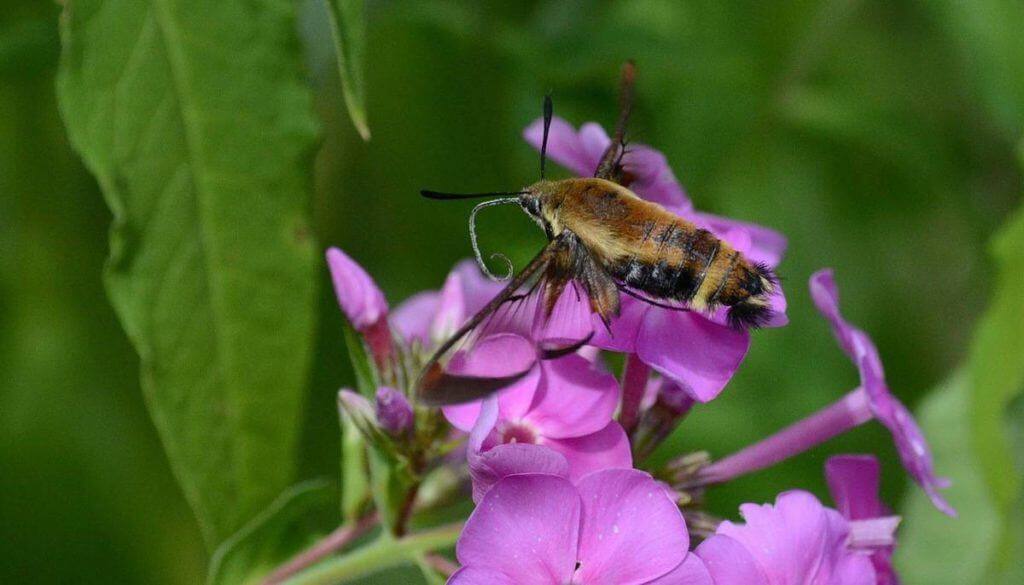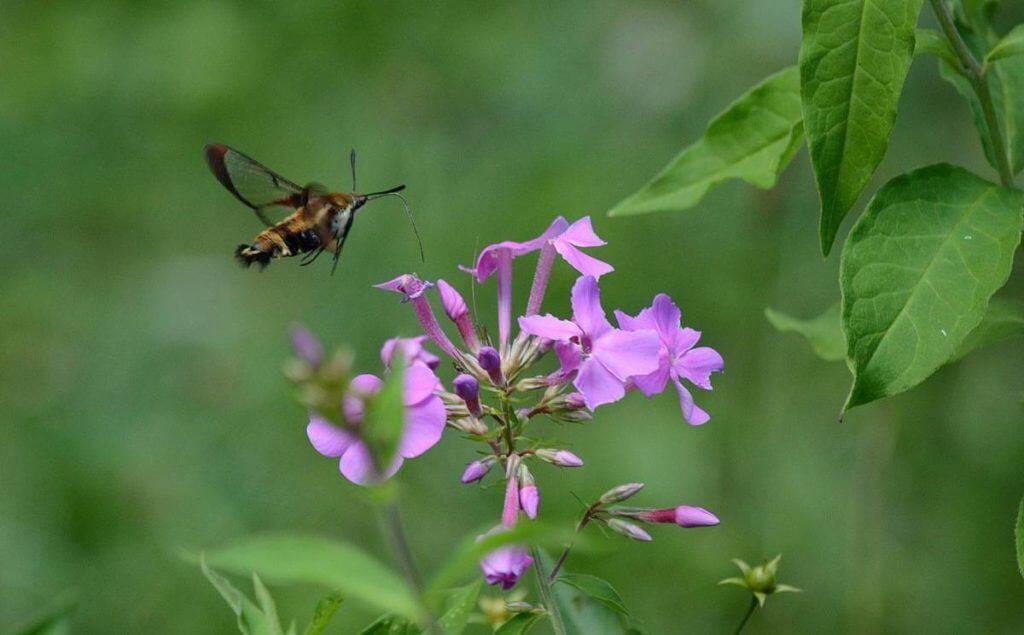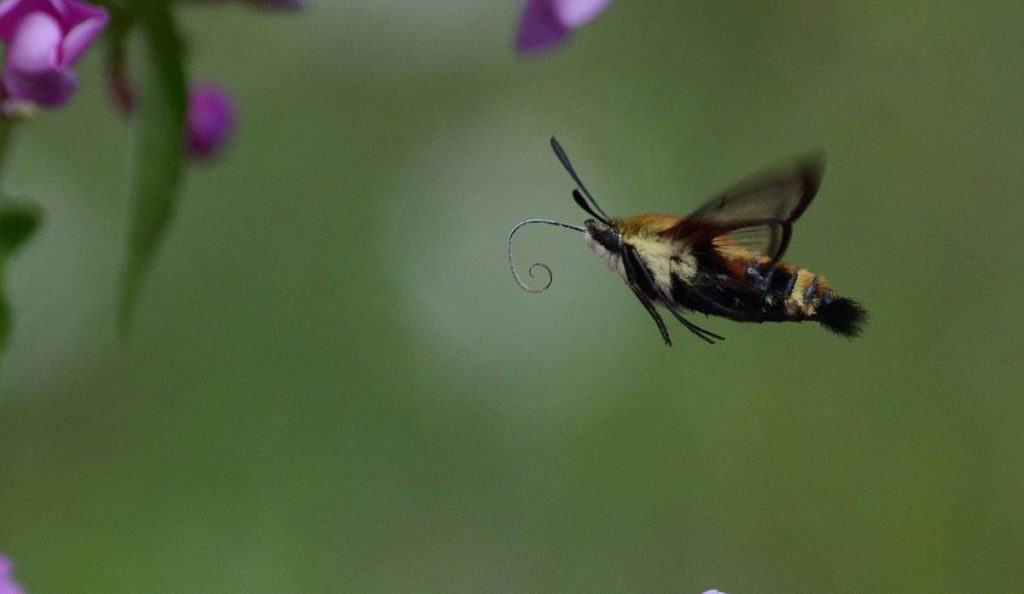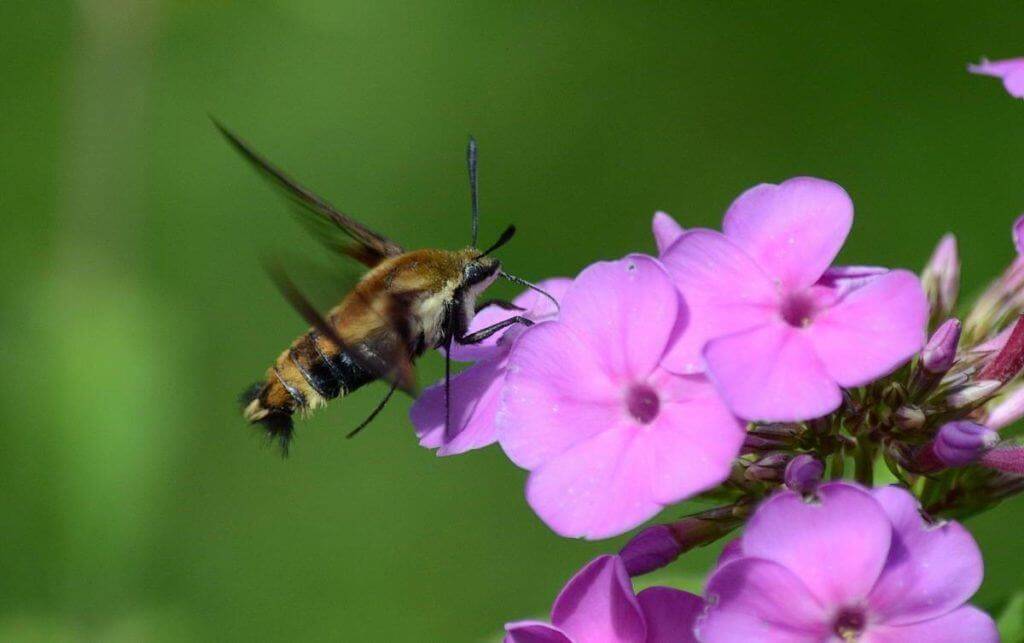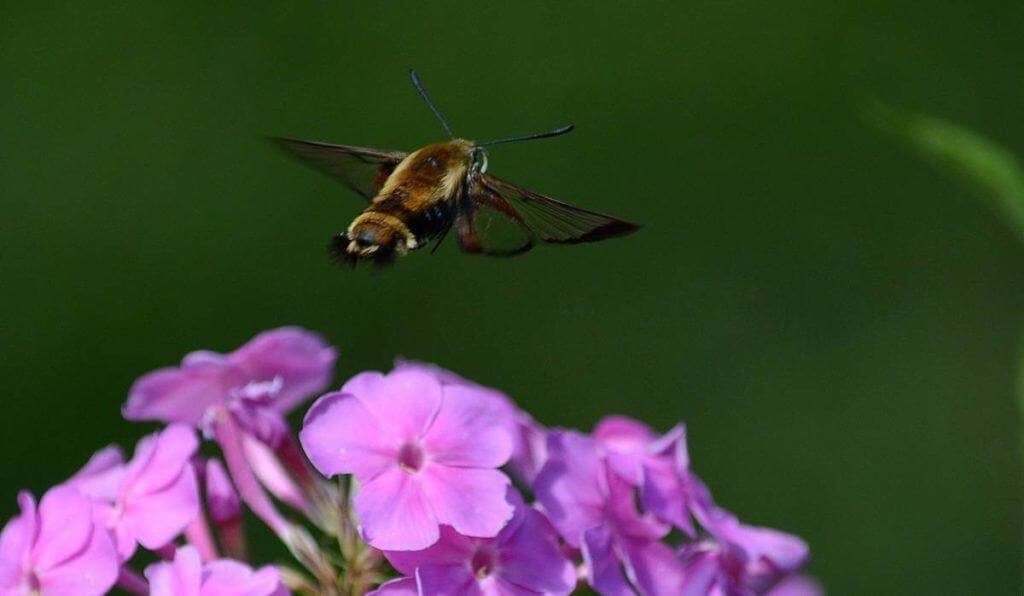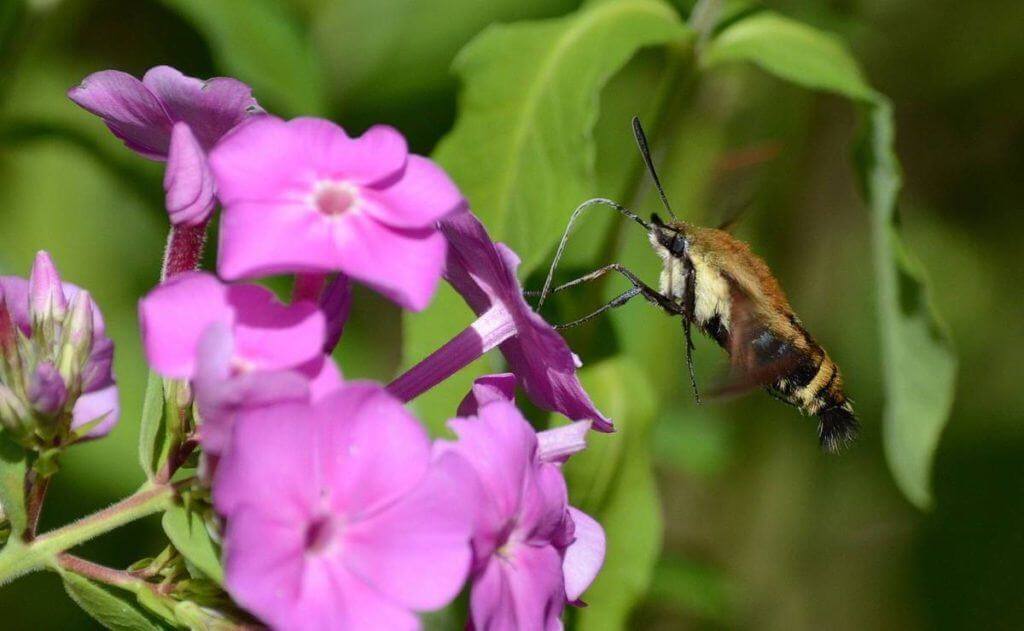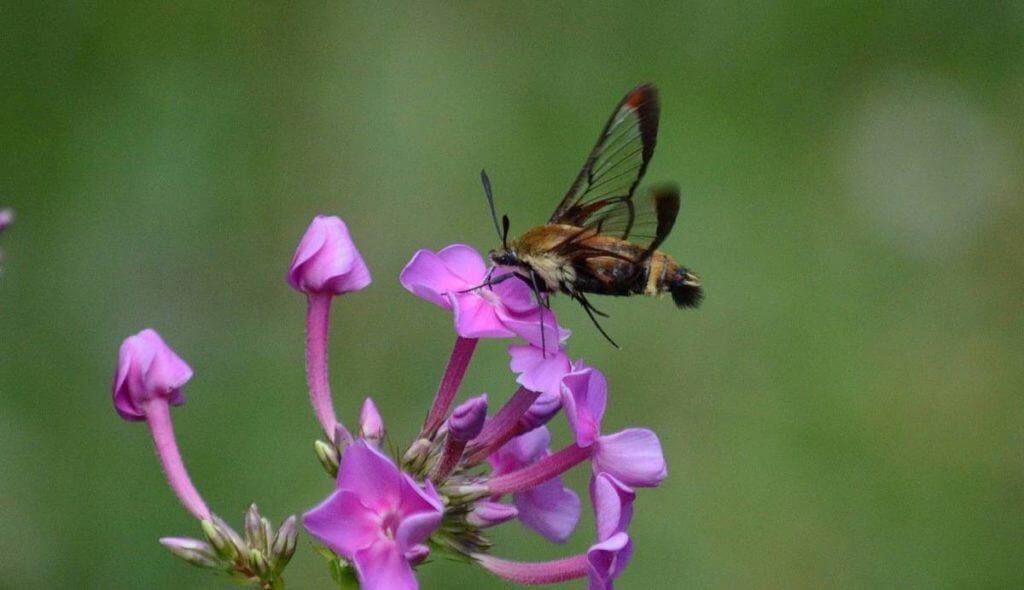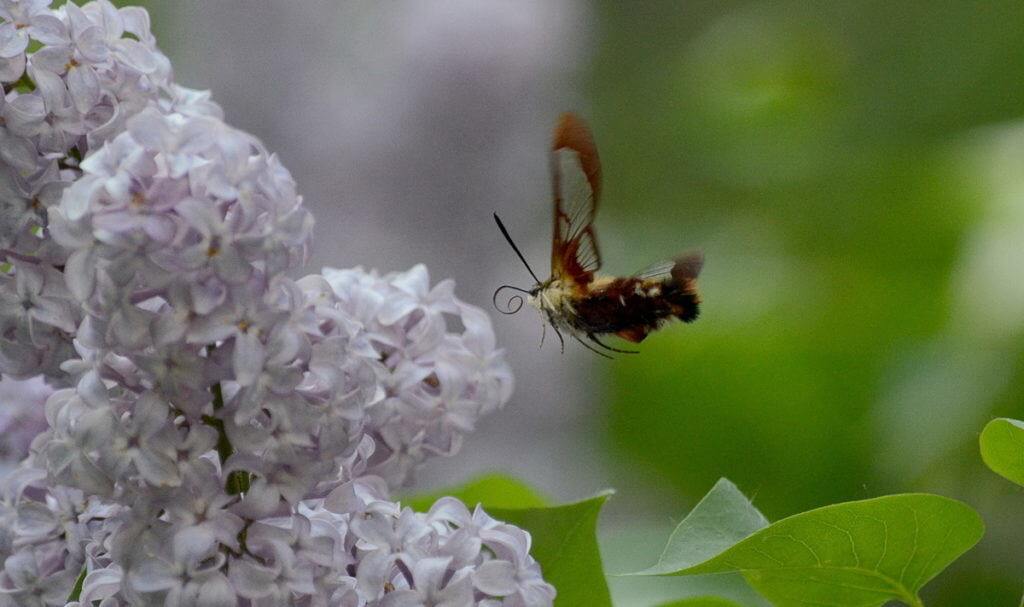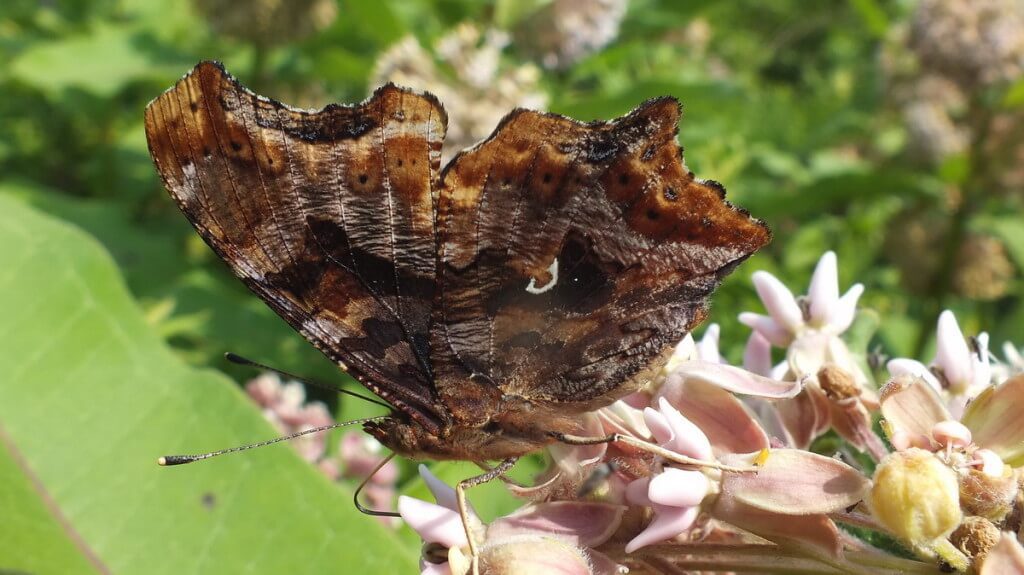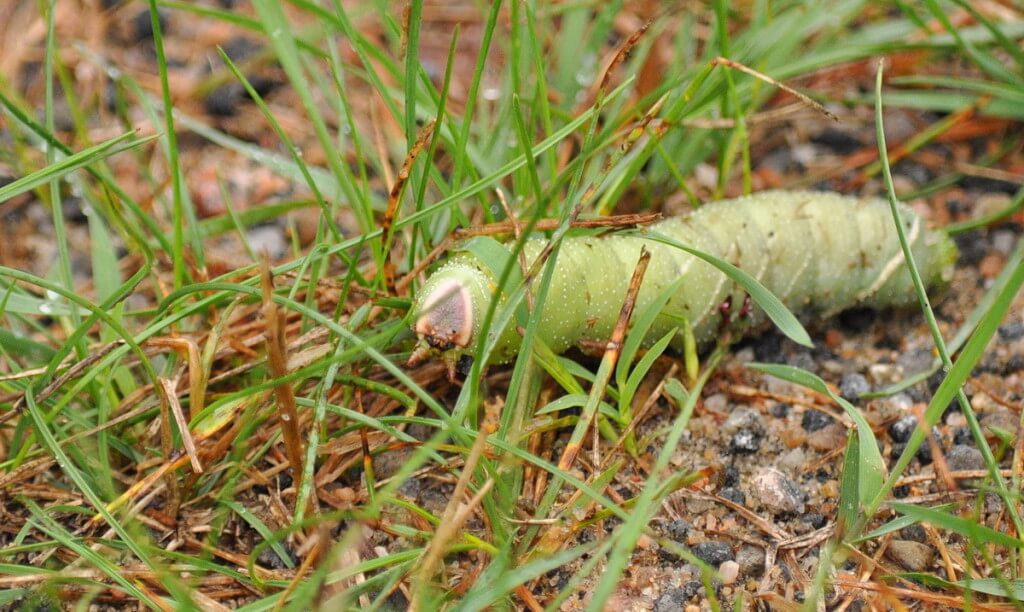A Snowberry Clearwing Moth enjoys Fragrant Phlox
For the second visit in a row at my mom’s place, a tour of the gardens was in order, and both times found me without the camera that usually hangs around my neck. A mad dash to the house to alert Bob and to grab my camera had me ready to photograph this stunning Snowberry Clearwing Moth as it flitted from flower to flower.
The patch of Phlox was small…only a few stray stems at the bottom of the vegetable garden…but this Snowberry Clearwing Moth found the available flowerheads sufficient to occupy itself for a good length of time.
Having observed a Hummingbird Clearwing Moth at mom’s lilacs earlier in the season, I at first thought this was the same species. I since happened upon a clear and definitive guide to the differences in the wings, so it is possible to distinguish between this, a Snowberry Clearwing, and Slender Clearwing and Hummingbird Clearwing Moths. It all depends upon the clear area of the forewing.
A couple of other diagnostic features that set Snowberry Clearwing Moths apart from the other two species are, one, the black band that extends across the eye and down the lateral side of the thorax, and two, the black legs.
In the northern parts of their range where the temperatures are cooler, Snowberry Clearwing Moths only have one brood per season, but in southern Ontario, two generations of these Moths will be seen on the wing between March and September.
The larva of a Snowberry Clearwing Moth grows from the 1st through the 4th instar stage and ends up a plump green caterpillar that then burrows beneath leaf litter and forms a cocoon. Several weeks later, after metamorphosis is complete, the adult emerges and lays eggs for the next generation. It is the pupae of the second generation that overwinter in the soil in northern climes.
These bumblebee lookalikes stand a better chance of survival for the sheer fact that predators avoid them for fear of a painful sting.
It was fascinating to watch the Snowberry Clearwing Moth and to introduce both my mom and sister to the species. While the flowery fragrance of the phlox floated on the air, we took delight in the Moth’s similarity to both a hummingbird and a bumblebee, even noting the faint hum of its wings.
This member of the order Lepidoptera, like other Clearwing Moths, hovers in front of any suitable flower and unfurls its long tongue to reach into the throat of a blossom. This Moth was using its long proboscis to siphon nectar from deep within the delicate pink flowers making up the composite flowerhead. They are such fascinating insects.
You May Also Enjoy:
A Hummingbird Clearwing Moth at Oxtongue Lake
An Eastern Comma Butterfly at Tommy Thompson Park
A Modest Sphinx Moth Caterpillar at Oxtongue Lake
Among the Winged Magic at El Rosario Monarch Butterfly Reserve in Mexico

